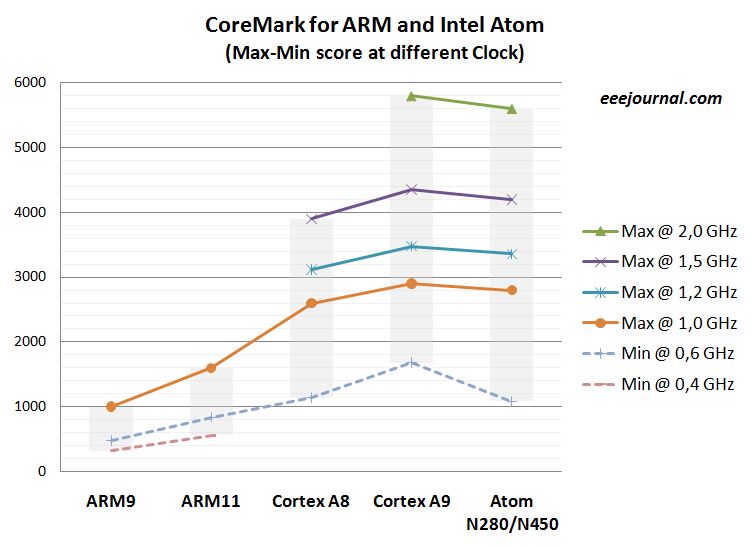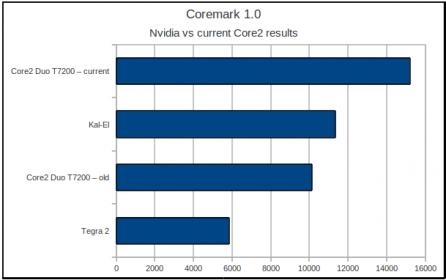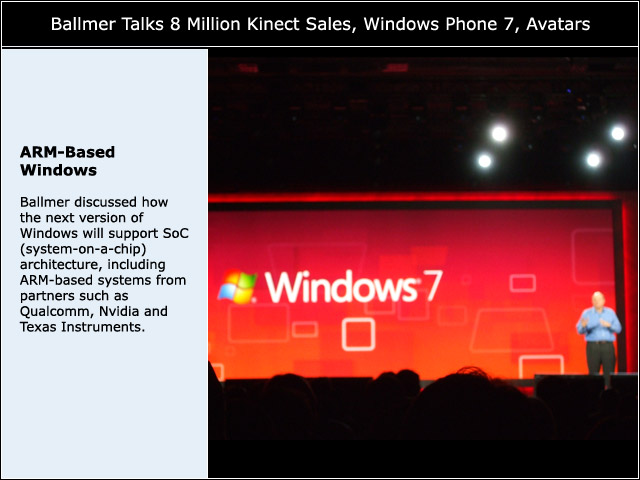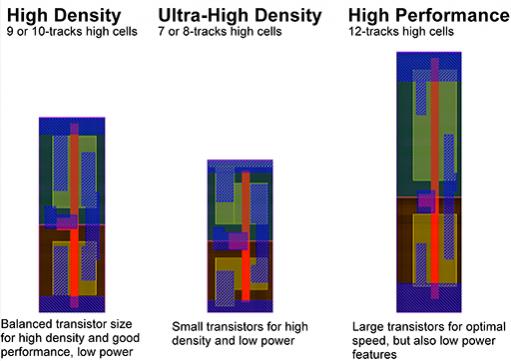This blog was posted 10 months ago, and the comments have made it much more interesting! Don’t miss the various comments at the back. Also feel free to let us know if you think the status, in this ARM vs Intel “war” has changed a lot since March 2011. Do you really think Intel has catch up with ARM in the mobile industry? Are many of you already using Windows as a smartphone OS, based on ARM architecture? Did ARM made a break through in the PC servers market?…
And now, the blog:
All of these, but we feel the most important is ARM technological ubiquity to win on the long term!
In the ARM vs Intel war (even with no declaration), we frequently hear arguments about performance, power and OS support, all of them are relevant, and we will see what is the real status here. Another argument is very important: ARM processor core is everywhere in our real life. ARM is present in the wireless segment, Handset and smartphone, that’s clear, but also in Consumer (DVD, BlueRay, Digital TV, Set-Top-Box, Digital Still Camera…), Industrial (metering, smart cards IC and readers…), PC peripherals (more than 90% of printers, Solid State Drives (SSD)…) and now in the Netbook and Media Tablets. If tomorrow Intel processor would disappear, only the PC segment would be impacted… and Intel processor replaced by AMD. But imagine that ARM IP core could not be licensed anymore… The reason for ARM ubiquity is because ARM IP (Processor and Libraries) are widely available, to IDM or fabless through Silicon foundries, on most of the technology nodes.

Let’s come back to the primary argument: performance. If we look at a benchmark (CoreMark) between various ARM core and Intel Atom (for Smartphone or Media Tablet applications) made in 2010, we can see that the latest, available on Silicon, core from ARM, the Cortex A9 is doing slightly better than the Intel AtomN280/N450. The most recent benchmark (February 2011) made between a quad core Nvidia product (Kal-El) and Intel Core2 Duo T7200 shows a clear advantage for Intel, in pure performance (but the ranking could be reversed if we count in Performance per $…). Let’s credit Intel as being the performance leader, even if the ATOM/Cortex A9 benchmark shows that this is not always true.

The next parameter is power. Power has always been a key parameter for mobile, battery powered devices, for obvious reasons. It can also become a key parameter in computing, for example in server farms for storage, as cloud computing is growing fast, so it would be wise to minimize both the cooling related costs and… electricity cost. So far, let’s take the tablet or smartphone application as an example. The available data are coming from “Arm Cortex A8 Vs Intel Atom: Architectural And Benchmark Comparisons” (University of Texas – 2010) and credit the ARM based IC (OMAP3540) of a power consumption in standby mode of 7mW and 1.5W in “full on” mode whereas the ATOM N280 consumption is 2.5W in full mode and 100mW in standby mode… and there is no integrated GPU in it. As expected, the ARM based application processor bring a real advantage to the mobile devices (Smartphone, Netbook, Tablet), as the power consumption is lower by as much as one order of magnitude in standby mode and by 40% in “full on” mode.
The article from University of Texas, written in fall 2009, was stating: “The feature that may lead to marketplace dominance may not be limited to the hardware but in software. While there are many more ARM processors in production than x-86 based processors, more consumers are familiar with x-86 based software. … In this sense, ARM must ensure adequate consumer software is available.”

I fully agree with this statement, but since last CES in January, we know that the next version of Windows will support ARM-based systems. This is really a strong key for the development of ARM based CPU in the PC segment. We just hope that the chip makers, chasing for higher performance with ARM-based CPU, will not forget along the road the power management techniques which have been used in circuit design (for wireless application) and have positioned ARM as the undisputed leader in term of power consumption. ARM architecture is by nature less power hungry, but the designer know how in power management at the block level has helped a lot to reduce the power at chip level.
The last, but not least, point to highlight is ARM ubiquity in term of technology: ARM core are available on every digital – and in some case mixed signal – technology node. It can be at IDM owning their technology like Texas Instruments, ST Microelectronics or Samsung, or for fabless through the technologies supported by the foundries, like TSMC, Global Foundries, UMC… The latest announcement was from Globalfoundries “GLOBALFOUNDRIES Unveils Industry’s First 28nm Signoff-Ready Digital Design Flows” – January 13[SUP]th[/SUP] 2011. The availability of the IP libraries or of the CPU core itself, allowing using the core to various chip makers, from the start-up fabless up to the 2[SUP]nd[/SUP] largest IDM like Samsung, is and will continue to be the foundation for ARM success.

As you can see on this figure from ARM, a design team always can optimize the core instantiation in respect with the application, and the desired performance to power trade-off, by selecting the right library type. He can also design, within the same chip, some specific blocks targeting high speed by using the 12-tracks high cells, when the rest of the chip will be optimized for power consumption at first (if the target application is battery powered) or for density, when the target application require the lowest possible unit price. This is why it is key for the semiconductor community –the fables and also the IDM who adopt more and more a “fab-lite” profile – to have these libraries from ARM available on the latest process nodes from the foundries. The strong relationship between ARM and Global Foundries or TSMC illustrate very well how such a case is a win-win-win (ARM-Foundry-Chip Maker) relationship.
If I would be dualistic, I would say that on one hand you have a monopolistic family of solutions, that you have to buy “as is”, which means today under the form of an IC with no other choice, sourced from a unique supplier. On the other hand, you can chose the solution which best fit your needs: you can buy an ARM microcontroller as an ASSP from Atmel, STM, Samsung and more, or you can sketch you design using the library of your choice, optimizing for power or area or performance, targeting the process node which give you the best compromise in term of Time-To-Market, development cost, performance and last but not least unit cost (or you should try to negotiate the processor ASP with Intel…) and come up with the solution which best fir your business model. Thanks to the wide availability of ARM processor, IP libraries and supported target technology nodes. ARM business model has so far prevented them to reach the revenue level of Intel or Samsung. This model, license their core and never make a chip, will probably make them the long term winner in the Intel vs ARM war. To support this assertion, just imagine Intel disappearing tomorrow… Would the electronic world survive? The answer is clearly yes, with “minor” change, like AMD replacing Intel. What would it be if ARM disappears tomorrow?
By Eric Esteve – IPNEST
Share this post via:






Comments
0 Replies to “ARM vs Intel…Performance? Power? OS support? Or ubiquity?”
You must register or log in to view/post comments.